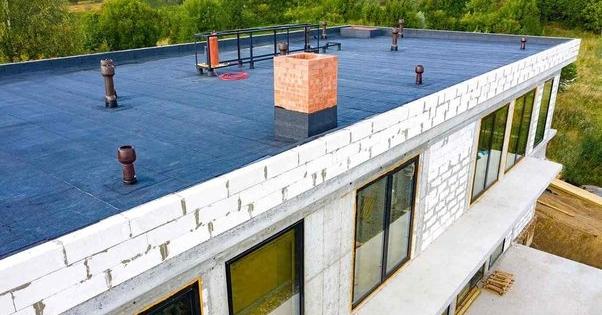In the architectural symphony of a building, the roof plays a crucial role, not just as a protector against elements but as a defining aesthetic feature. However, the primary challenge lies in ensuring its impermeability to water, which demands precision, expertise, and an understanding of diverse materials like metal, tiles, and concrete. In construction and maintenance, the evolution of waterproofing techniques for these materials is a testament to technological advancements and skilled craftsmanship. This article explores the advanced techniques employed in the services for roof waterproofing with metal, tile, and concrete roofs, unveiling the layers of innovation that shield multiple structures from the caprices of weather.
1. Metal Roof Coatings:
Metal-made roofs, known for their durability and longevity, are susceptible to corrosion and leaks. The latest in waterproofing for metal roofs involves applying specialised coatings that seal leaks, prevent rust, and reflect heat. These coatings, made from silicone, acrylic, and polyurethane, are applied directly onto the cleaned metal surface, creating a seamless, waterproof barrier that extends the roof’s life and enhances its energy efficiency.
2. Tile Roof Underlayment:
Tile roofs are pretty famous for their aesthetic appeal and durability but can be prone to water infiltration. Modern waterproofing techniques for tile roofs focus on robust underlayment systems. These systems involve the installation of a waterproof membrane beneath the tiles, which acts as a secondary barrier against water. Advanced synthetic underlayments, which are more durable and resistant to tearing than traditional materials, are increasingly used to ensure superior waterproofing.
3. Sealing and Flashing for Joints and Edges:
The most vulnerable parts of any roof are the joints, edges, and places where the roof meets other structures like chimneys or vents. For all kinds of roofs, including metal, tile, and concrete, specialised sealants and flashing materials are used to protect these critical areas. These materials, designed to expand and contract with temperature changes, provide a flexible yet impermeable seal that prevents water ingress.
4. Liquid Waterproofing Membranes for Concrete Roofs:
Concrete roofs, particularly flat ones, require a meticulous approach to waterproofing. The use of liquid waterproofing membranes has gained prominence in this area. These high-tech polymer-modified liquids are applied to the surface of the concrete, where they cure to form a rubber-like elastomeric waterproof membrane. This method effectively covers complex shapes and roofs with numerous protrusions, providing a seamless, durable water barrier.
5. Insulative and Reflective Coatings for Energy Efficiency:
In addition to waterproofing, modern solutions also focus on energy efficiency. Reflective coatings with waterproofing benefits are increasingly popular for metal and concrete roofs. Typically, white or light-coloured coatings reflect sun rays and heat away from the building, decreasing cooling costs and enhancing the structure’s overall energy efficiency while providing robust waterproof protection.
6. Regular Maintenance and Inspections:
An often overlooked aspect of roof waterproofing is the importance of regular maintenance and inspections. Advanced techniques in waterproofing are only as effective as their implementation and upkeep. Professional inspections can notify potential issues before they become major problems, ensuring that the waterproofing systems for metal, tile, and concrete roofs remain intact and effective over time.
Conclusion:
The advanced techniques in the services for roof waterproofing with metal, tile, and concrete roofs represent a critical convergence of innovation and practicality in modern construction and building maintenance. From specialised coatings to robust underlayment systems, these methods protect buildings from the damaging effects of water and contribute to their energy efficiency and aesthetic appeal. The ongoing advancements in this field underscore the importance of proactive and informed approaches to roof maintenance. As constructions continue to evolve in design and function, advanced waterproofing techniques will remain pivotal, safeguarding the integrity and longevity of the built environments against the uncertainties of nature.
